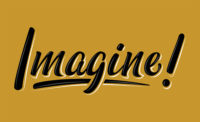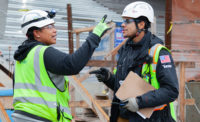As construction responds to soaring global needs and seeks to turn billions in new funding into real solutions, it’s clear that only an expanded and diverse workforce can meet the challenge.
Two events this month show much progress industry has made to propel diversity, equity and inclusion—but with still much to do.
Construction Inclusion Week, set for Oct. 16-20, demonstrates how the message in 2021 from its six founding firms—that industry DEI works—has gained national and international support, with non-U.S. participants joining for the first time, organizers of the awareness-raiser and education vehicle say. Its message must be core to organizational culture if construction is to attract and retain those in long under-represented groups whose numbers, talents and perspectives will determine whether industry can deliver in the years ahead.
Construction Inclusion Week industry sponsors and participants come from widely different construction markets, specialties and employers. Organizing contractors Mortenson, McCarthy, Turner, Clark Construction, DPR Construction, Smoot Construction and Gilbane now are backed by more than 130 sponsors, with over 5,000 private and public sector entities set to participate this year.
This month, another industry effort has launched to increase intentional opportunities for Black professionals and Black-owned business owners, severely underrepresented in architecture, engineering and construction. Through efforts that will range from partnerships with colleges and universities to mentorship, training and data exchange, AEC Unites will also serve as a resource for needed talent. The group says the pandemic led to cancelled or reduced internships, which has limited exposure of Black and minority students to the industry.
Launched by design and construction services firm McKissack & McKissack leader Deryl McKissack, AEC Unites also counts the chiefs of Turner, Jacobs, Hensel Phelps, WSP USA, Gensler, Stantec, Moody Nolan, Clark Construction, H.J. Russell and HOK as key supporters.
While the terms diversity, equity and inclusion—and DEI—are familiar across the globe, there is a sense that DEI 2.0 needs a kick start. This new version goes beyond the initial impulse to open construction doors more widely and aims to examine what creates an inclusive workplace and how to measure results.
ENR also will explore in an upcoming report the legal struggle to end racial harassment and discrimination in construction as incidents continue and are reported to authorities. The analysis will show the damage and costs of these actions on jobsites and in workplaces that run wide and deep.
Check out the websites of Construction Inclusion Week and AEC Unites to learn about these groups’ efforts to accelerate positive DEI results and how your firm or employer can get involved.
Also, head to ENR.com for podcast insights from industry leaders about what’s working, and what’s not.







Post a comment to this article
Report Abusive Comment